2.3E: Exercises - Using Transformations to Graph Functions
- Page ID
- 48344
Exercise \(\PageIndex{3}\)
Match the graph to the function definition.
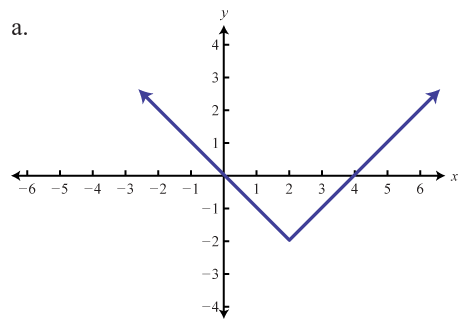
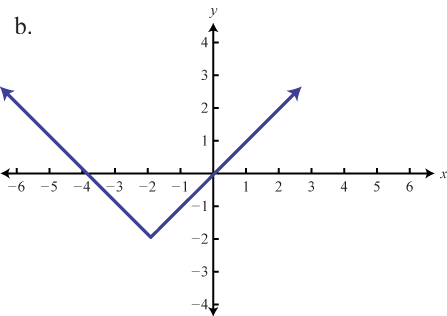
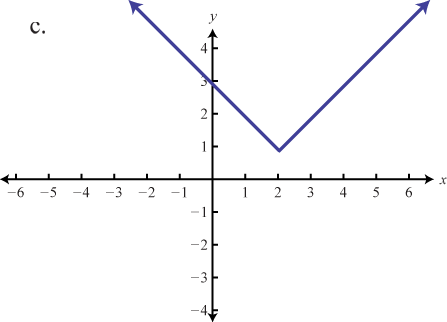

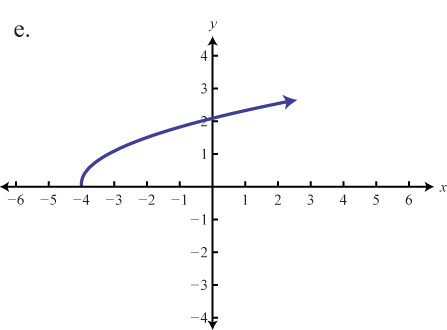
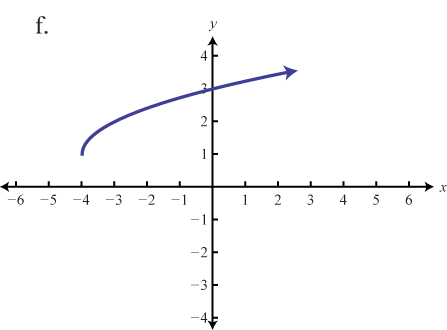
- \(f(x) = \sqrt{x + 4}\)
- \(f(x) = |x − 2| − 2\)
- \(f(x) = \sqrt{x + 1} -1\)
- \(f(x) = |x − 2| + 1\)
- \(f(x) = \sqrt{x + 4} + 1\)
- \(f(x) = |x + 2| − 2\)
- Answer
-
1. e
3. d
5. f
Exercise \(\PageIndex{4}\)
Graph the given function. Identify the basic function and translations used to sketch the graph. Then state the domain and range.
- \(f(x) = x + 3\)
- \(f(x) = x − 2\)
- \(g(x) = x^{2} + 1\)
- \(g(x) = x^{2} − 4\)
- \(g(x) = (x − 5)^{2}\)
- \(g(x) = (x + 1)^{2}\)
- \(g(x) = (x − 5)^{2} + 2\)
- \(g(x) = (x + 2)^{2} − 5\)
- \(h(x) = |x + 4|\)
- \(h(x) = |x − 4|\)
- \(h(x) = |x − 1| − 3\)
- \(h(x) = |x + 2| − 5\)
- \(g(x) = \sqrt{x} − 5\)
- \(g(x) = \sqrt{x − 5}\)
- \(g(x) = \sqrt{x − 2} + 1\)
- \(g(x) = \sqrt{x + 2} + 3\)
- \(h(x) = (x − 2)^{3}\)
- \(h(x) = x^{3} + 4\)
- \(h(x) = (x − 1)^{3} − 4\)
- \(h(x) = (x + 1)^{3} + 3\)
- \(f(x) = \frac{1}{x−2}\)
- \(f(x) = \frac{1}{x+3}\)
- \(f(x) = \frac{1}{x} + 5\)
- \(f(x) = \frac{1}{x} − 3\)
- \(f(x) = \frac{1}{x+1} − 2\)
- \(f(x) = \frac{1}{x−3} + 3\)
- \(g(x) = −4\)
- \(g(x) = 2\)
- \(f ( x ) = \sqrt [ 3 ] { x - 2 } + 6\)
- \(f ( x ) = \sqrt [ 3 ] { x + 8 } - 4\)
- Answer
-
1. \(y = x\); Shift up \(3\) units; domain: \(\mathbb{R}\); range: \(\mathbb{R}\)
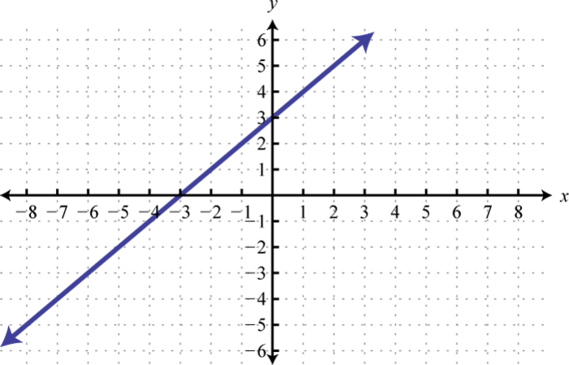
Figure 2.5.24 3. \(y = x^{2}\); Shift up \(1\) unit; domain: \(ℝ\); range: \([1, ∞)\)
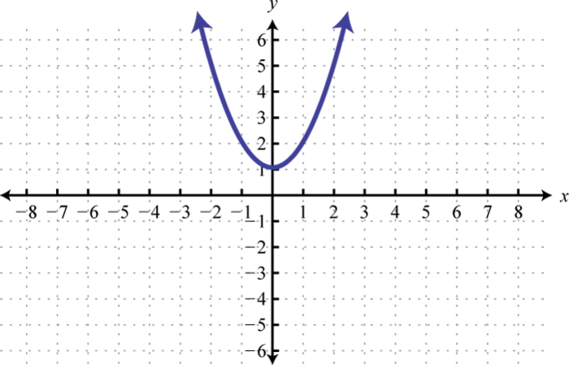
Figure 2.5.25 5. \(y = x^{2}\); Shift right \(5\) units; domain: \(ℝ\); range: \([0, ∞)\)
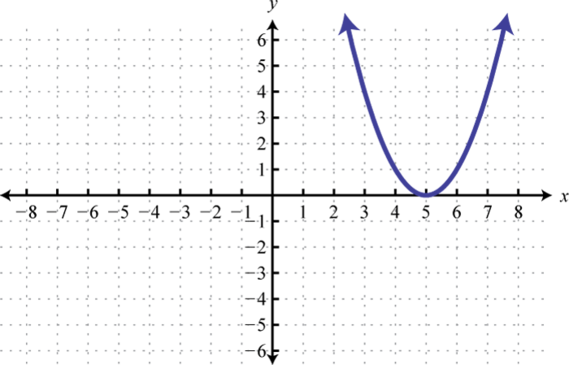
Figure 2.5.26 7. \(y = x^{2}\); Shift right \(5\) units and up \(2\) units; domain: \(ℝ\); range: \([2, ∞)\)

Figure 2.5.27 9. \(y = |x|\); Shift left \(4\) units; domain: \(ℝ\); range: \([0, ∞)\)
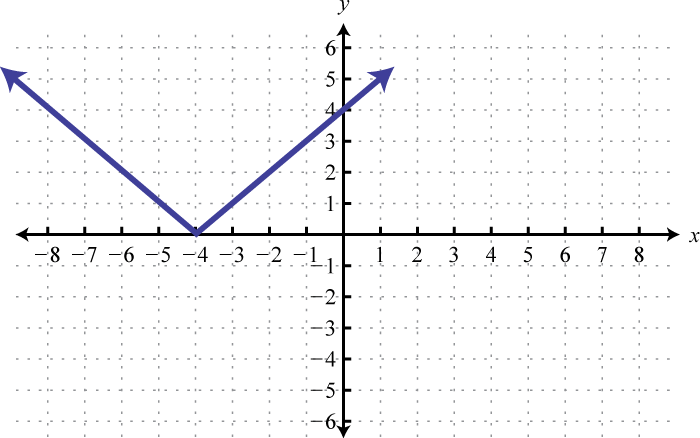
Figure 2.5.28 11. \(y = |x|\); Shift right \(1\) unit and down \(3\) units; domain: \(ℝ\); range: \([−3, ∞)\)
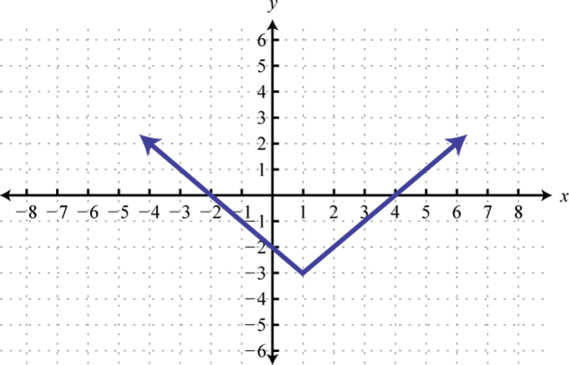
Figure 2.5.29 13. \(y = \sqrt{x}\); Shift down \(5\) units; domain: \([0, ∞)\); range: \([−5, ∞)\)
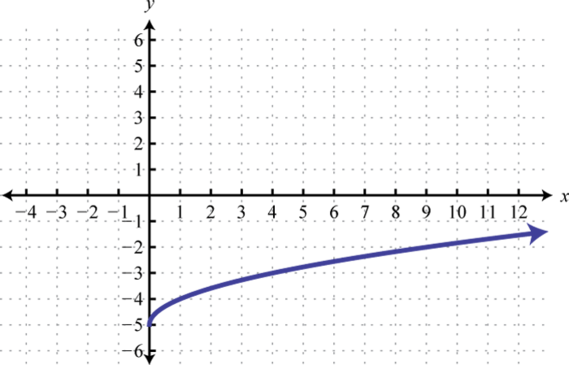
Figure 2.5.30 15. \(y = \sqrt{x}\); Shift right \(2\) units and up \(1\) unit; domain: \([2, ∞)\); range: \([1, ∞)\)
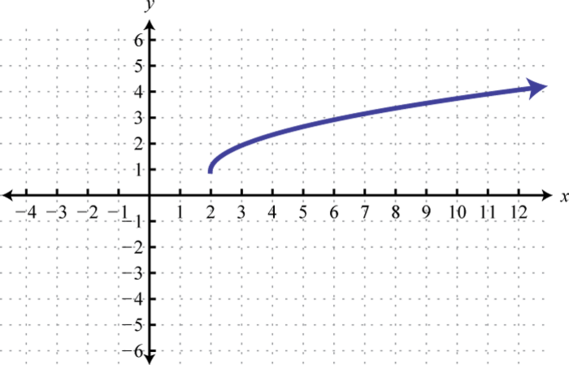
Figure 2.5.31 17. \(y = x^{3}\) ; Shift right \(2\) units; domain: \(ℝ\); range: \(ℝ\)
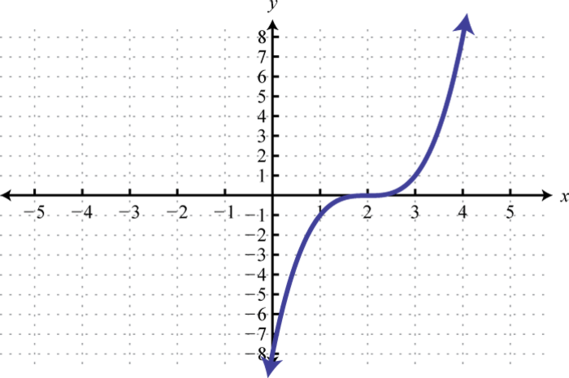
Figure 2.5.32 19. \(y = x^{3}\); Shift right \(1\) unit and down \(4\) units; domain: \(ℝ\); range: \(ℝ\)
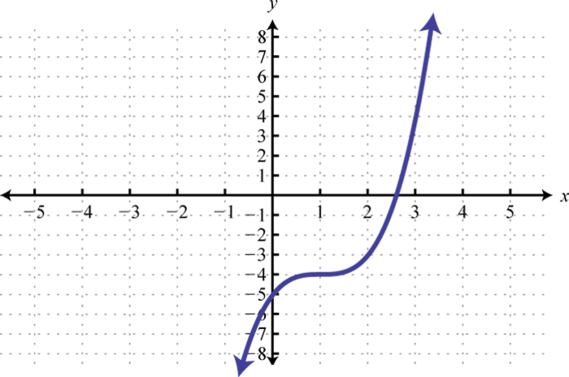
Figure 2.5.33 21. \(y = \frac{1}{x}\); Shift right \(2\) units; domain: \((−∞, 2) ∪ (2, ∞)\); range: \((−∞, 0) ∪ (0, ∞)\)
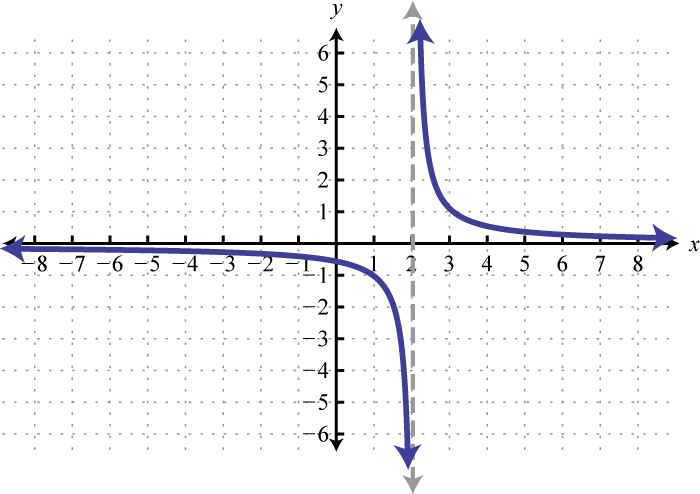
Figure 2.5.34 23. \(y = \frac{1}{x}\); Shift up \(5\) units; domain: \((−∞, 0) ∪ (0, ∞)\); range: \((−∞, 1) ∪ (1, ∞)\)
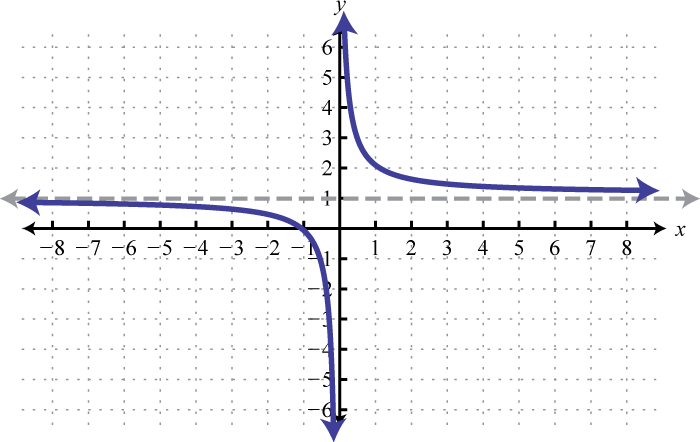
Figure 2.5.35 25. \(y = \frac{1}{x}\); Shift left \(1\) unit and down \(2\) units; domain: \((−∞, −1) ∪ (−1, ∞)\); range: \((−∞, −2) ∪ (−2, ∞)\)
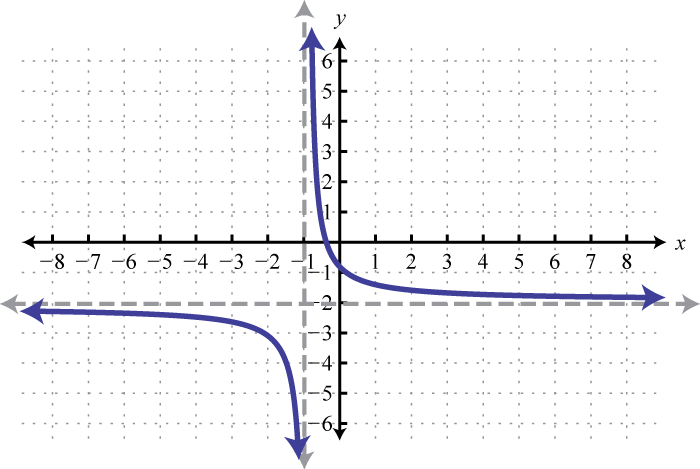
Figure 2.5.36 27. Basic graph \(y = −4\); domain: \(ℝ\); range: \(\{−4\}\)
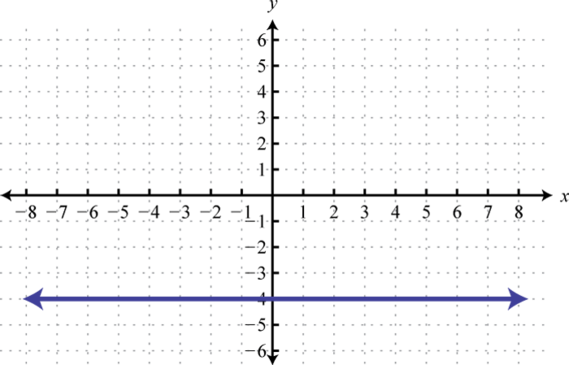
Figure 2.5.37 29. \(y = \sqrt [ 3 ] { x }\); Shift up \(6\) units and right \(2\) units; domain: \(ℝ\); range: \(ℝ\)
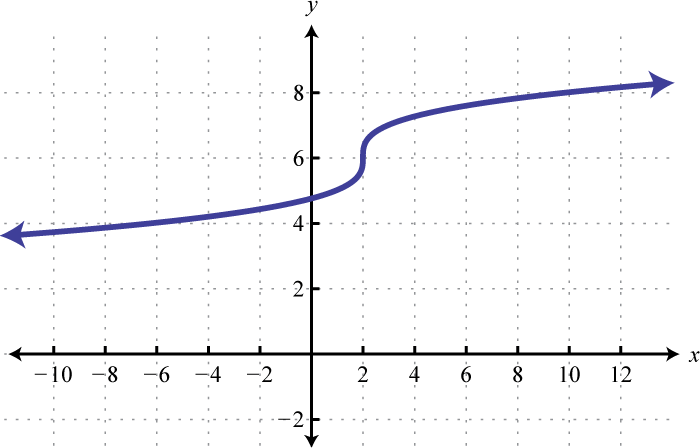
Figure 2.5.38
Exercise \(\PageIndex{5}\)
Graph the piecewise functions.
- \(h ( x ) = \left\{ \begin{array} { l l } { x ^ { 2 } + 2 } & { \text { if } x < 0 } \\ { x + 2 } & { \text { if } x \geq 0 } \end{array} \right.\)
- \(h ( x ) = \left\{ \begin{array} { l l } { x ^ { 2 } - 3 \text { if } x < 0 } \\ { \sqrt { x } - 3 \text { if } x \geq 0 } \end{array} \right.\)
- \(h ( x ) = \left\{ \begin{array} { l l } { x ^ { 3 } - 1 } & { \text { if } x < 0 } \\ { | x - 3 | - 4 } & { \text { if } x \geq 0 } \end{array} \right.\)
- \(h ( x ) = \left\{ \begin{array} { c c } { x ^ { 3 } } & { \text { if } x < 0 } \\ { ( x - 1 ) ^ { 2 } - 1 } & { \text { if } x \geq 0 } \end{array} \right.\)
- \(h ( x ) = \left\{ \begin{array} { l l } { x ^ { 2 } - 1 } & { \text { if } x < 0 } \\ { 2 } & { \text { if } x \geq 0 } \end{array} \right.\)
- \(h ( x ) = \left\{ \begin{array} { l l } { x + 2 } & { \text { if } x < 0 } \\ { ( x - 2 ) ^ { 2 } } & { \text { if } x \geq 0 } \end{array} \right.\)
- \(h ( x ) = \left\{ \begin{array} { l l } { ( x + 10 ) ^ { 2 } - 4 } & { \text { if } x < - 8 } \\ { x + 4 } & { \text { if } - 8 \leq x < - 4 } \\ { \sqrt { x + 4 } } & { \text { if } x \geq - 4 } \end{array} \right.\)
- \(f ( x ) = \left\{ \begin{array} { l l } { x + 10 } & { \text { if } x \leq - 10 } \\ { | x - 5 | - 15 } & { \text { if } - 10 < x \leq 20 } \\ { 10 } & { \text { if } x > 20 } \end{array} \right.\)
- Answer
-
1.
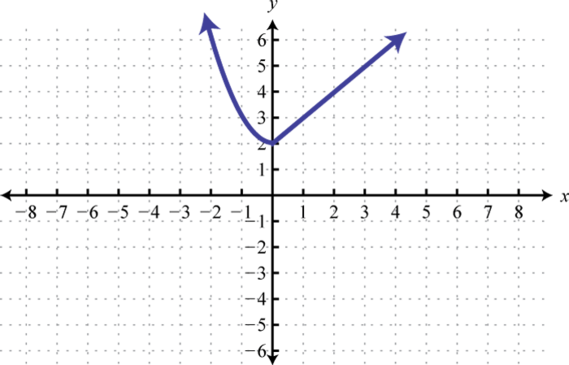
Figure 2.5.39 3.
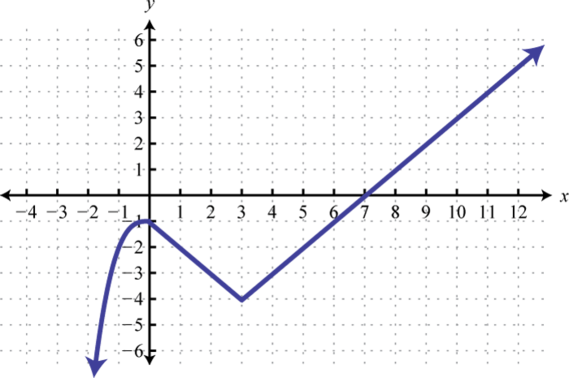
Figure 2.5.40 5.
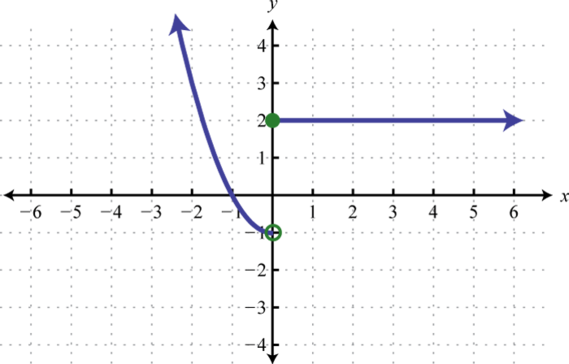
Figure 2.5.41 7.
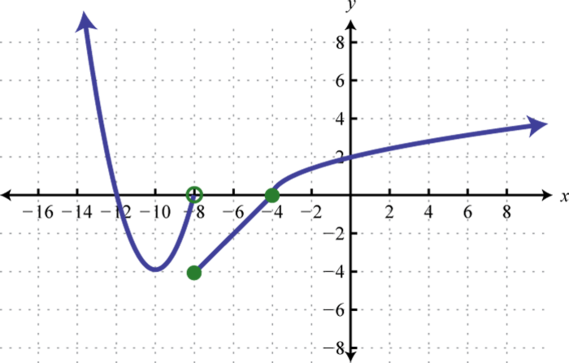
Figure 2.5.42
Exercise \(\PageIndex{6}\)
Write an equation that represents the function whose graph is given.
1.

2.
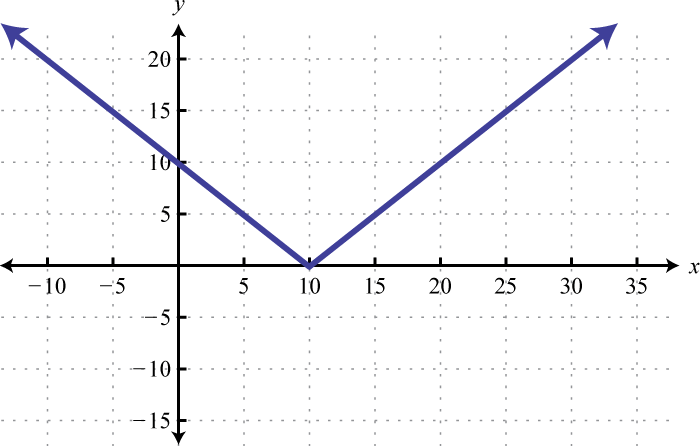
3.
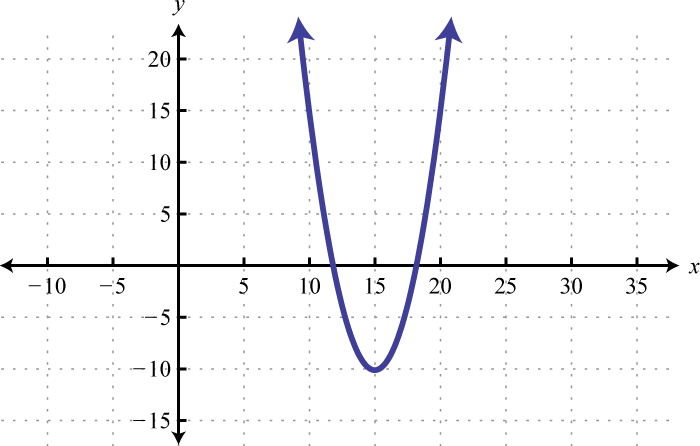
4.
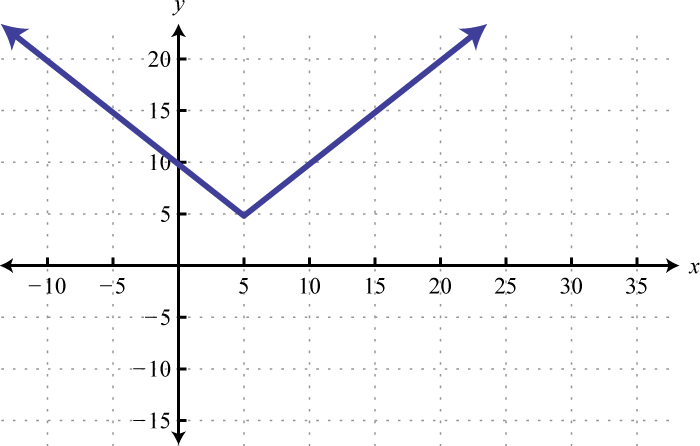
5.
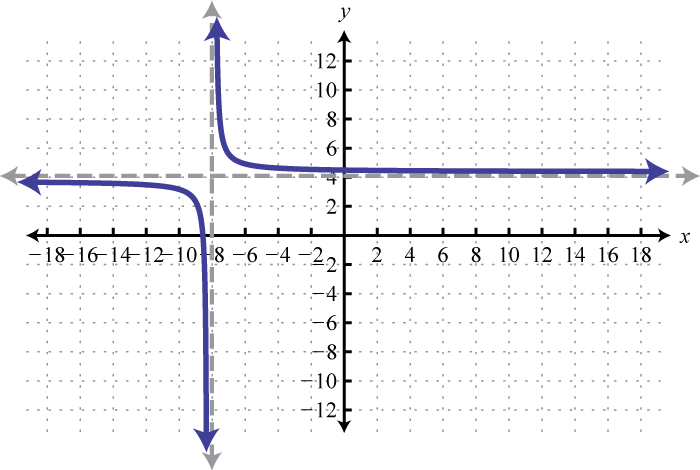
6.
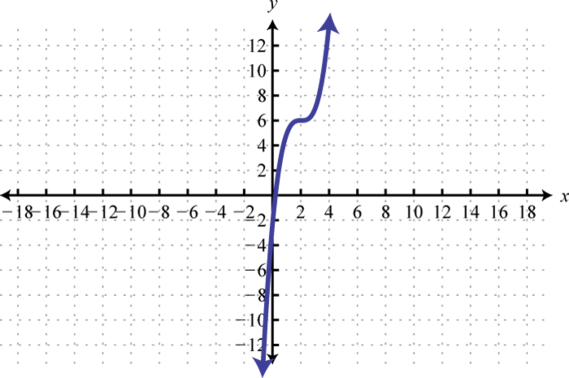
7.
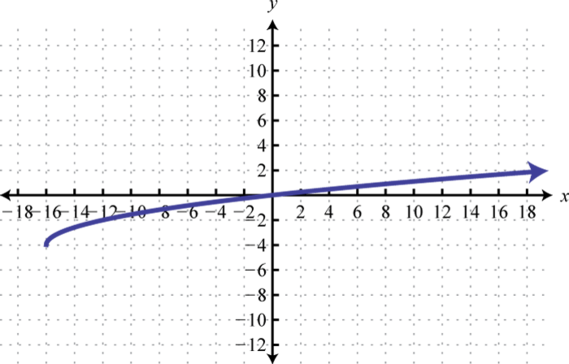
8.

- Answer
-
1. \(f ( x ) = \sqrt { x - 5 }\)
3. \(f ( x ) = ( x - 15 ) ^ { 2 } - 10\)
5. \(f ( x ) = \frac { 1 } { x + 8 } + 4\)
7. \(f ( x ) = \sqrt { x + 16 } - 4\)
Exercise \(\PageIndex{6}\)
Match the graph to the given function defintion.
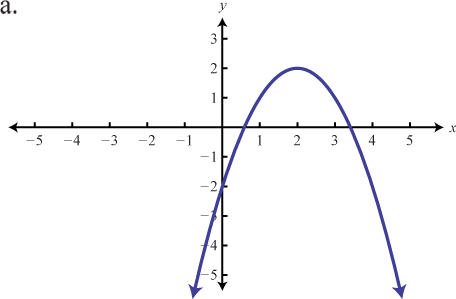
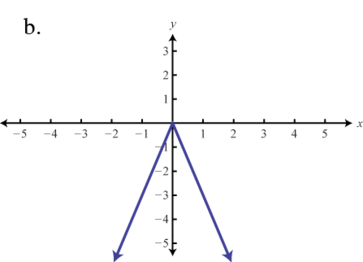
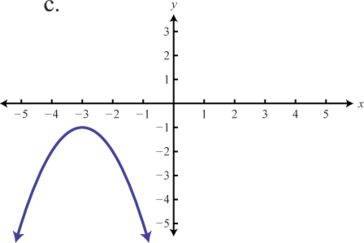
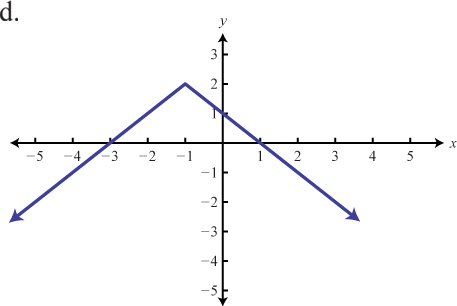
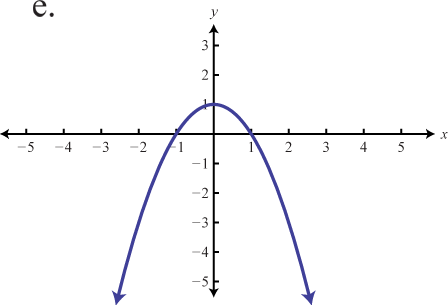
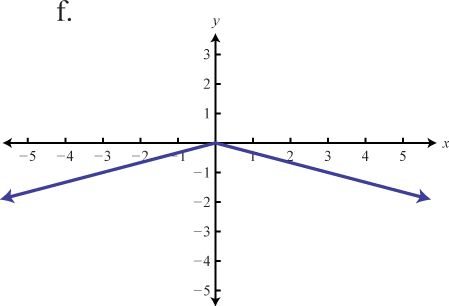
- \(f ( x ) = - 3 | x |\)
- \(f ( x ) = - ( x + 3 ) ^ { 2 } - 1\)
- \(f ( x ) = - | x + 1 | + 2\)
- \(f ( x ) = - x ^ { 2 } + 1\)
- \(f ( x ) = - \frac { 1 } { 3 } | x |\)
- \(f ( x ) = - ( x - 2 ) ^ { 2 } + 2\)
- Answer
-
1. b
3. d
5. f
Exercise \(\PageIndex{7}\)
Use the transformations to graph the following functions.
- \(f ( x ) = - x + 5\)
- \(f ( x ) = - | x | - 3\)
- \(g ( x ) = - | x - 1 |\)
- \(f ( x ) = - ( x + 2 ) ^ { 2 }\)
- \(h ( x ) = \sqrt { - x } + 2\)
- \(g ( x ) = - \sqrt { x } + 2\)
- \(g ( x ) = - ( x + 2 ) ^ { 3 }\)
- \(h ( x ) = - \sqrt { x - 2 } + 1\)
- \(g ( x ) = - x ^ { 3 } + 4\)
- \(f ( x ) = - x ^ { 2 } + 6\)
- \(f ( x ) = - 3 | x |\)
- \(g ( x ) = - 2 x ^ { 2 }\)
- \(h ( x ) = \frac { 1 } { 2 } ( x - 1 ) ^ { 2 }\)
- \(h ( x ) = \frac { 1 } { 3 } ( x + 2 ) ^ { 2 }\)
- \(g ( x ) = - \frac { 1 } { 2 } \sqrt { x - 3 }\)
- \(f ( x ) = - 5 \sqrt { x + 2 }\)
- \(f ( x ) = 4 \sqrt { x - 1 } + 2\)
- \(h ( x ) = - 2 x + 1\)
- \(g ( x ) = - \frac { 1 } { 4 } ( x + 3 ) ^ { 3 } - 1\)
- \(f ( x ) = - 5 ( x - 3 ) ^ { 2 } + 3\)
- \(h ( x ) = - 3 | x + 4 | - 2\)
- \(f ( x ) = - \frac { 1 } { x }\)
- \(f ( x ) = - \frac { 1 } { x + 2 }\)
- \(f ( x ) = - \frac { 1 } { x + 1 } + 2\)
- Answer
-
1.
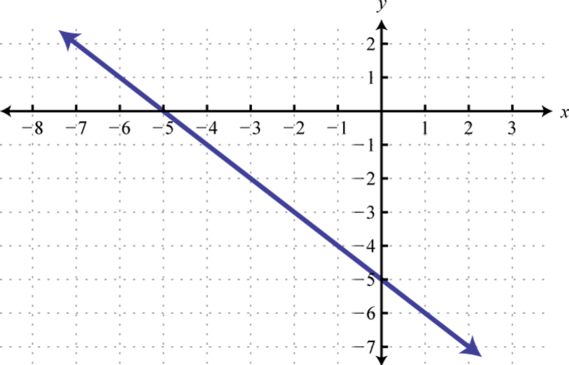
Figure 2.5.57 3.
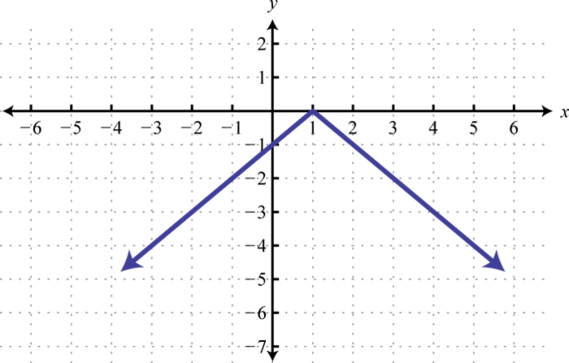
Figure 2.5.58 5.

Figure 2.5.59 7.
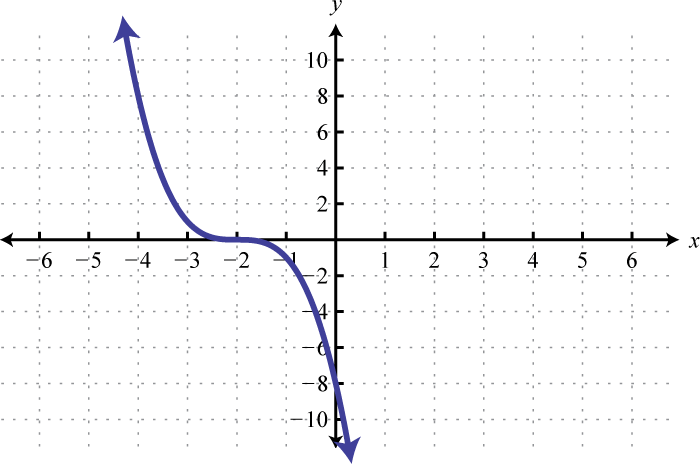
Figure 2.5.60 9.
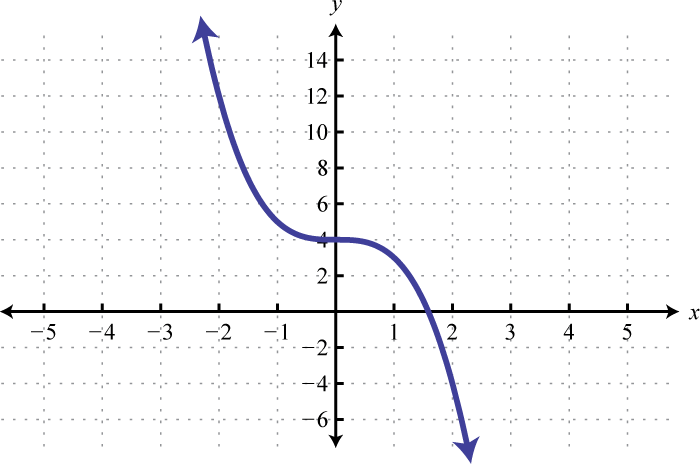
Figure 2.5.61 11.
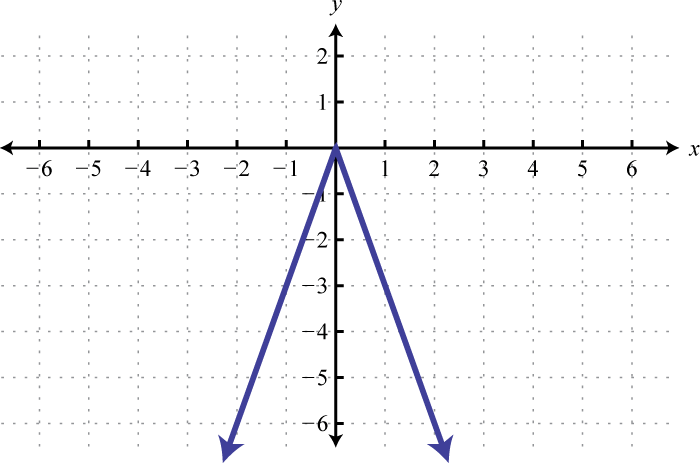
Figure 2.5.62 13.
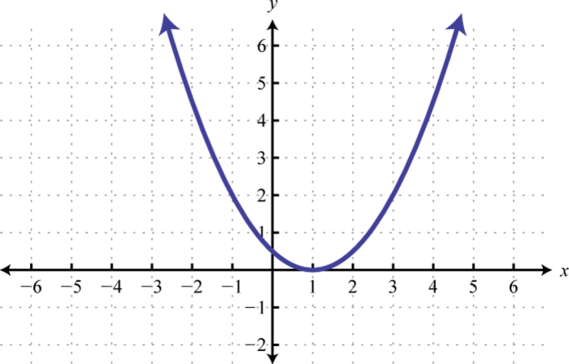
Figure 2.5.63 15.
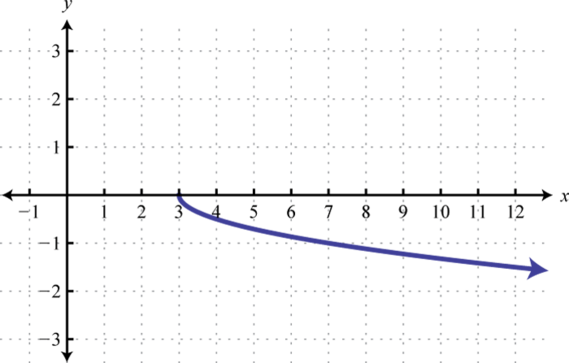
Figure 2.5.64 17.
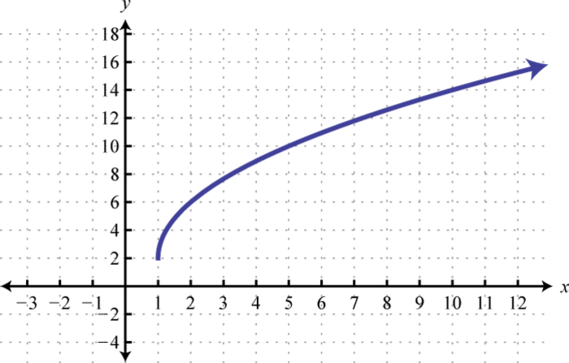
Figure 2.5.65 19.
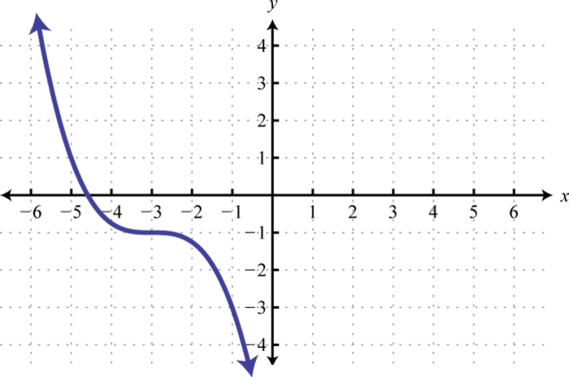
Figure 2.5.66 21.
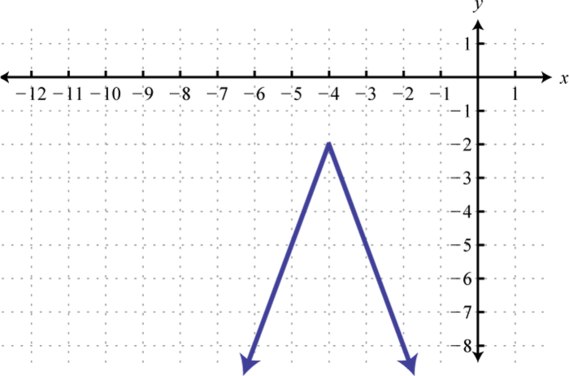
Figure 2.5.67 23.
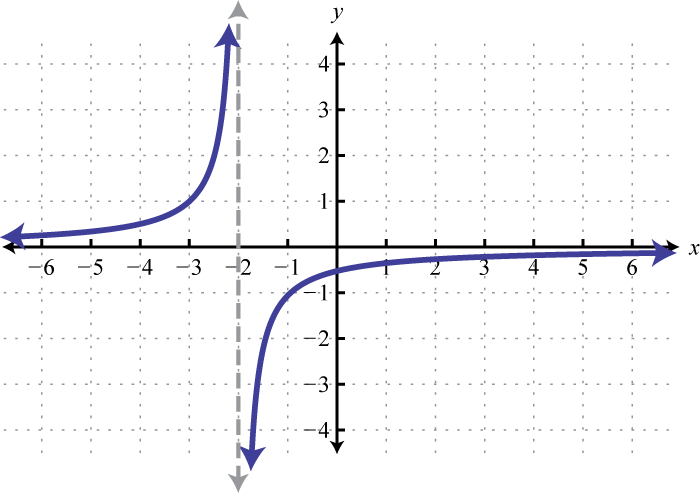
Figure 2.5.68
Exercise \(\PageIndex{8}\)
- Use different colors to graph the family of graphs defined by \(y=kx^{2}\), where \(k \in \left\{ 1 , \frac { 1 } { 2 } , \frac { 1 } { 3 } , \frac { 1 } { 4 } \right\}\). What happens to the graph when the denominator of \(k\) is very large? Share your findings on the discussion board.
- Graph \(f ( x ) = \sqrt { x }\) and \(g ( x ) = - \sqrt { x }\) on the same set of coordinate axes. What does the general shape look like? Try to find a single equation that describes the shape. Share your findings.
- Explore what happens to the graph of a function when the domain values are multiplied by a factor \(a\) before the function is applied, \(f(ax)\). Develop some rules for this situation and share them on the discussion board.
- Answer
-
1. Answer may vary
3. Answer may vary

